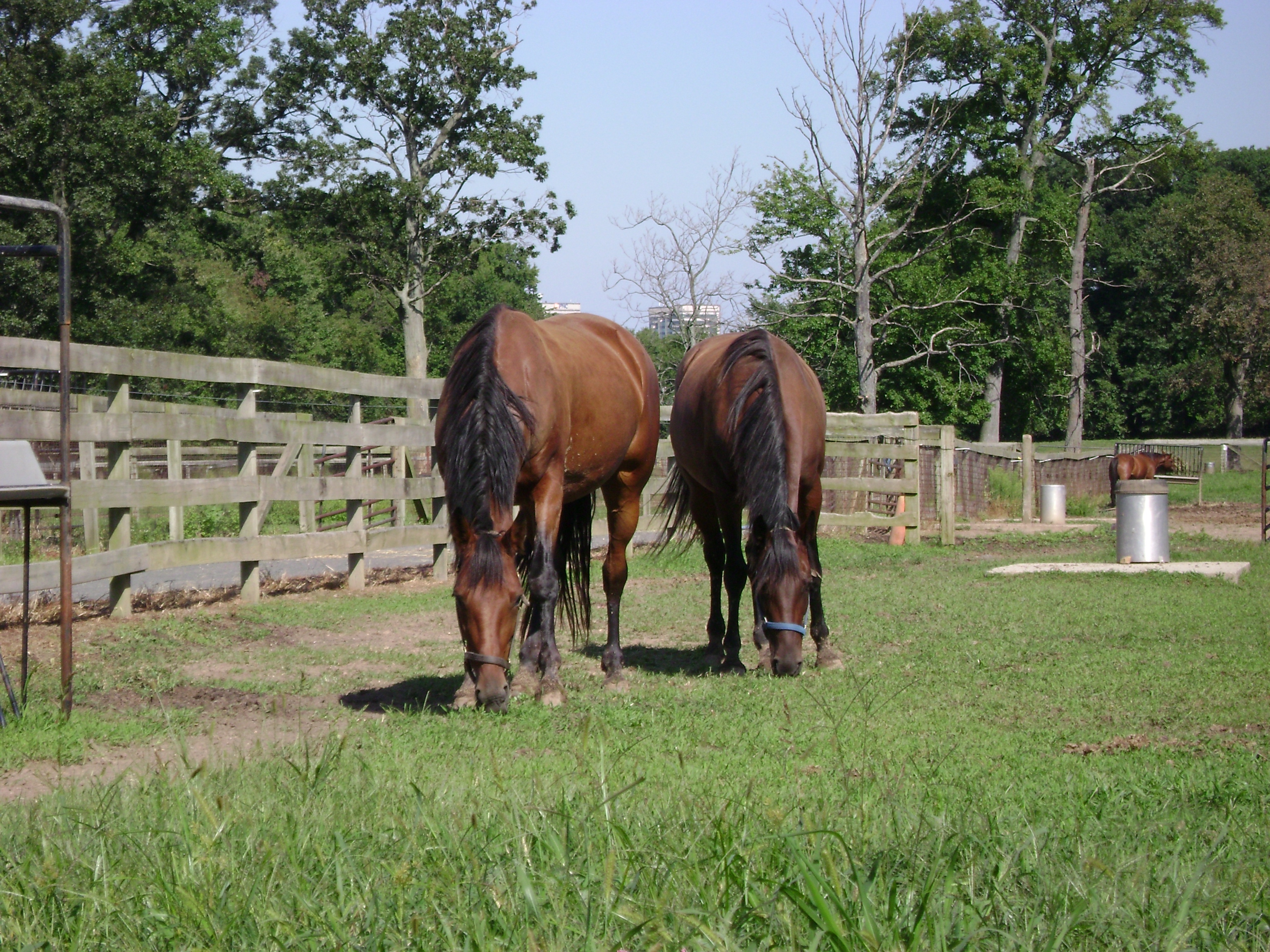Spring has sprung….and so has the grass!!!!
By now, pasture grasses are growing like crazy, and horses are happy to munch away. There are a few things you should keep in mind when turning your horses out.
As pasture start to grow, gradually introduce horses back to grass. The transition from winter hay to spring grass is a major diet change that must be done slowly to avoid an upset stomach. Start with a few minutes of grazing for a few days, then work up to an hour, then two, etc. allowing at least 3-4 days per step.
If your horse is prone to laminitis, is insulin resistant or has Equine Cushing’s Syndrome, you’ll definitely want to limit grazing time without limiting turnout. Weight management is a key concern for these horses. A grazing muzzle or use of a dry lot paddock will help to limit the intake of rich, spring grass while still allowing the horse to move around and exercise.
When days are sunny and warm, but nights are still chilly and cool, growing grass tends to store up all the sugar it made from photosynthesis during the day. That means that the next morning, sugar content will be high. If temperatures are steadily mild, then early morning pastures are usually lower in sugar. As the day goes on and the sun shines, the sugar content tends to rise by mid-late afternoon. Remember these basics when planning turnout schedules for horse with special dietary needs!
Healthy pastures are great way to provide nutrition for horses while reducing the cost of hay. For more information on pasture management, check out the Virtual Tour of the Ryders Lane Best Management Practices Demonstration Horse Farm, right here at Rutgers!
Until Next Time!
Your Pal,
Lord Nelson

